18 Sanity-Saving Organization Hacks Straight from the Pros
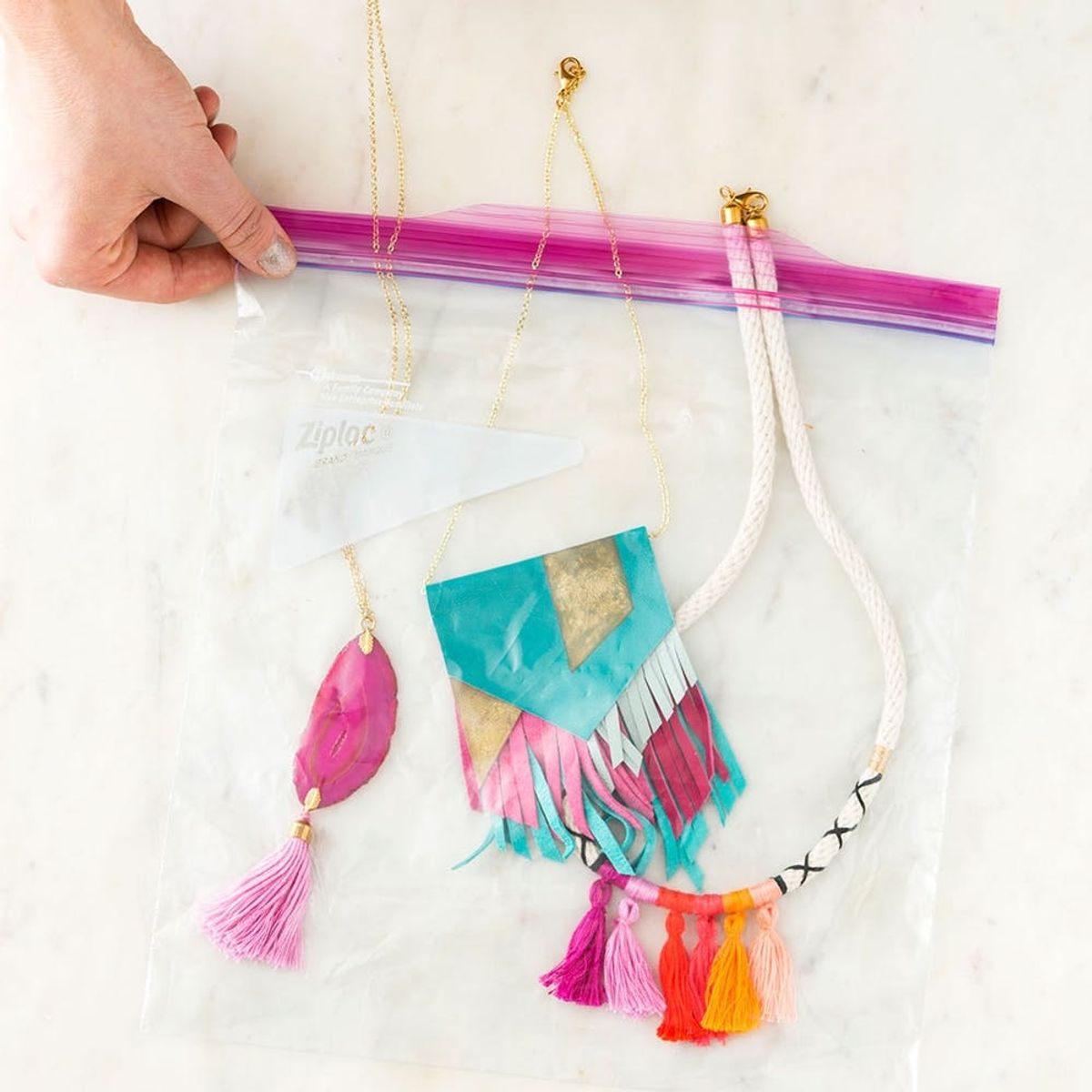
Maddie here! Today we’re taking on something near and dear to my heart: organization. As a small-space dweller *and* an avid shopper, it’s kinda key to my sanity to have an organized home, but I find that both my closet and kitchen pantry often resemble a disaster zone. Thankfully, we’re teaming up with Ziploc® and pro organizer Melanie Charlton to share 18 tips to organize these spaces the *right* way, using techniques that will help sustain organized bliss all year long.
Turns out, if you set the right organizational foundation (yeah, that’s a thing), invest in smart storage tools and adopt some healthy habits, your space can stay organized year-round. According to Melanie, “It’s like a great diet and exercise program: It takes some discipline and training before you see the results, but when you do it, it becomes a way of life. This is how getting yourself organized works!” Scroll on for 18 sanity-saving hacks for your pantry and closet, straight from the pros.
Psst: You can save on Ziploc® products at Target with Cartwheel savings! Select items on sale from January 8 through March 11.
CLOSET HACKS

1. Move your off-season clothes to storage. Stow away all warm-weather garments in breathable bags. Psst: This is a great hack for those of you with continually teeming closets and too big a love for shopping to live that minimalist lifestyle ;)
2. Go through all of your stuff. Toss anything that’s broken or never used. While you’re going through your closet to stow off-season stuff, make a donate and trash pile. Remember the golden rule: If you haven’t used it in a year, it’s time to part ways.
3. Use the same types of hangers and storage throughout your closet. “The easiest way to give your closet a makeover is to use all the same color and style hanger — this creates order and allows the eye to find your clothes,” explains Melanie.
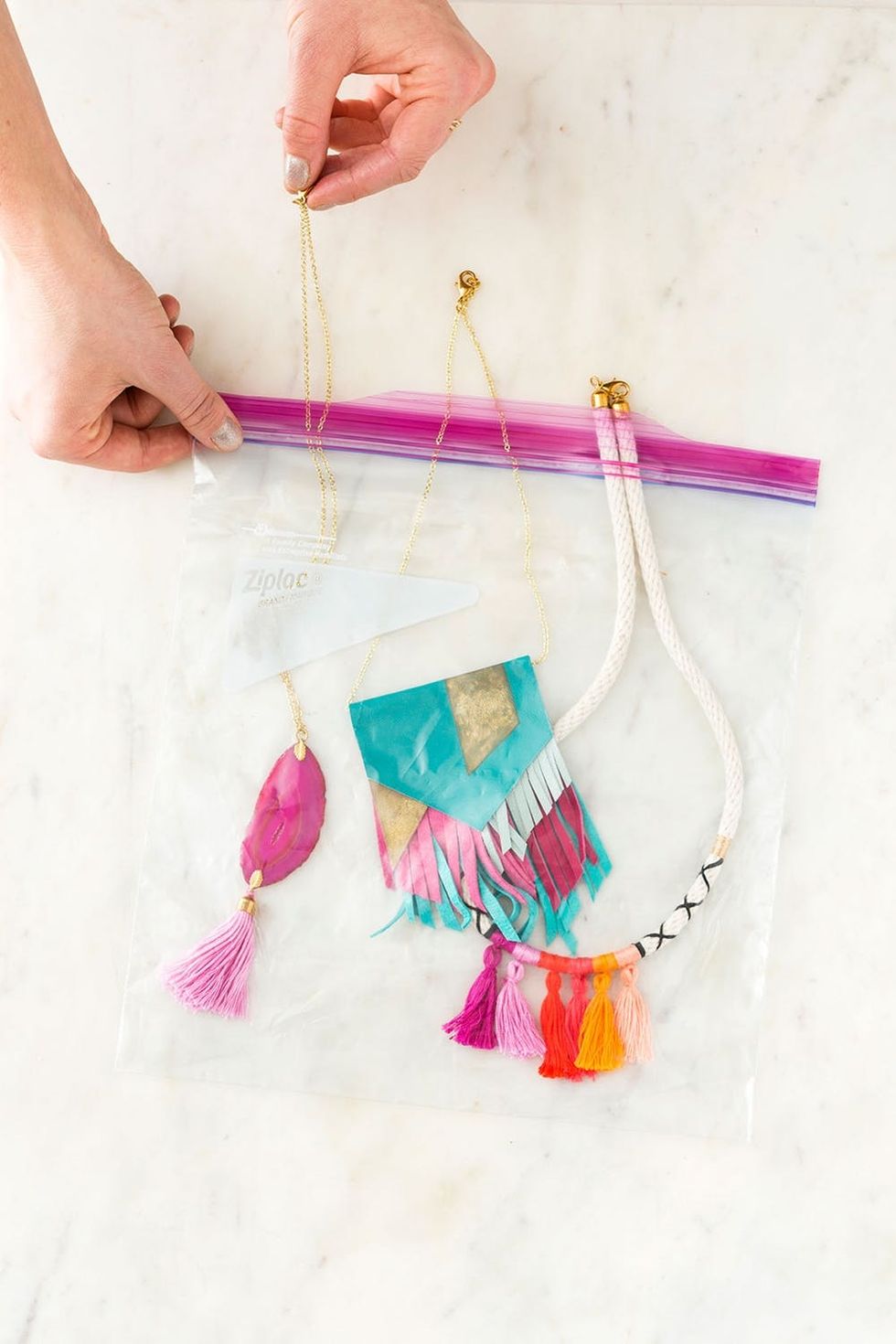
4. Use Ziploc® bags to organize jewelry. Melanie stores all of her jewelry and accessories in plastic bags to avoid tangling. Pro Tip: Leave the ends of your necklaces outside of the plastic bag, then zip up the mouth around the chains. This will help avoid tangled chains, AKA the time-wasting bane of our existence.
5. Sharing a closet with your partner? Make a game plan before you divvy up the space. “Couples and organization is a very tricky subject!” says Melanie. “It’s important for couples to mediate on their edits and learn about each other’s belongings and *then* come to a decision on who gets what space.” Yep, that means if your main man has way more sweaters than you, maybe he gets that extra drawer. Relationships are all about compromise, right?
6. Vertical space is your best friend. Maximize it! Add shelves to the tippy top of your closet and buy tall and skinny furniture that won’t take up as much square footage.
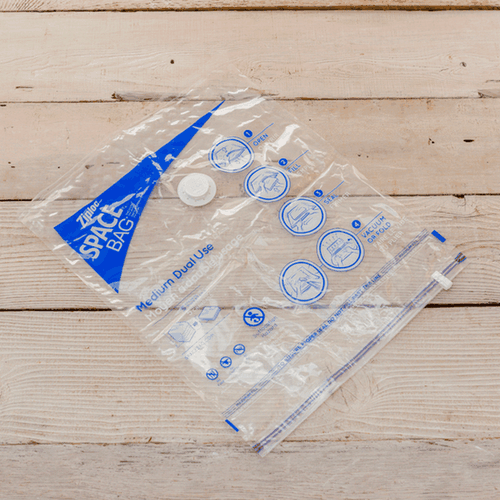
7. Try Ziploc® Space Bag®! Compression bags are among the greatest inventions we’ve ever discovered, up there with the blow dryer and, you know, the internet. Instead of wasting precious shelving space with piles of spare bedding, stow ‘em in a Space Bag® compression bag. They’re a cinch to use — you can suck the air out with a vacuum or roll the air out by hand.
8. Organize your closet by clothing type and color. This will make it easier to find your garments. Plus, color-coordinated things are extremely satisfying to look at, amirite?
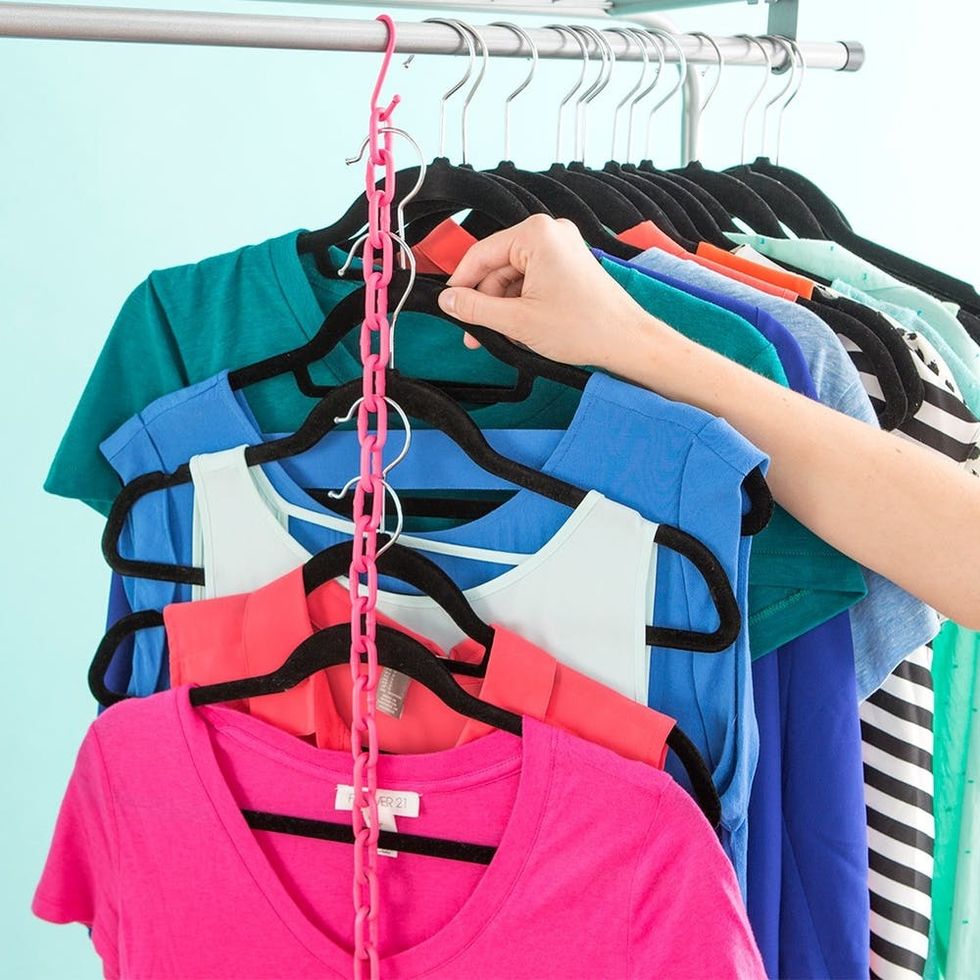
9. Try this genius (and cheap!) hanger hack. Attach two to three feet of chain to an S-hook, then fasten to your closet rod. Learn more about the hack here!
10. Invest in furniture that doubles as storage. If your closet is *still* overflowing and you’re too stubborn to keep purging (we get it), get smart about storage in other spaces of your home. Try a storage ottoman (bonus points if you DIY it!) or living room furniture with drawers.
11. Choose tomorrow’s outfit the night before. To avoid decision fatigue and the daily AM tornado when deciding on your outfit, figure it out the night before. Make the inevitable discard pile on your bed, so you’ll *have* to clean it up before hitting the hay. Smart, right?
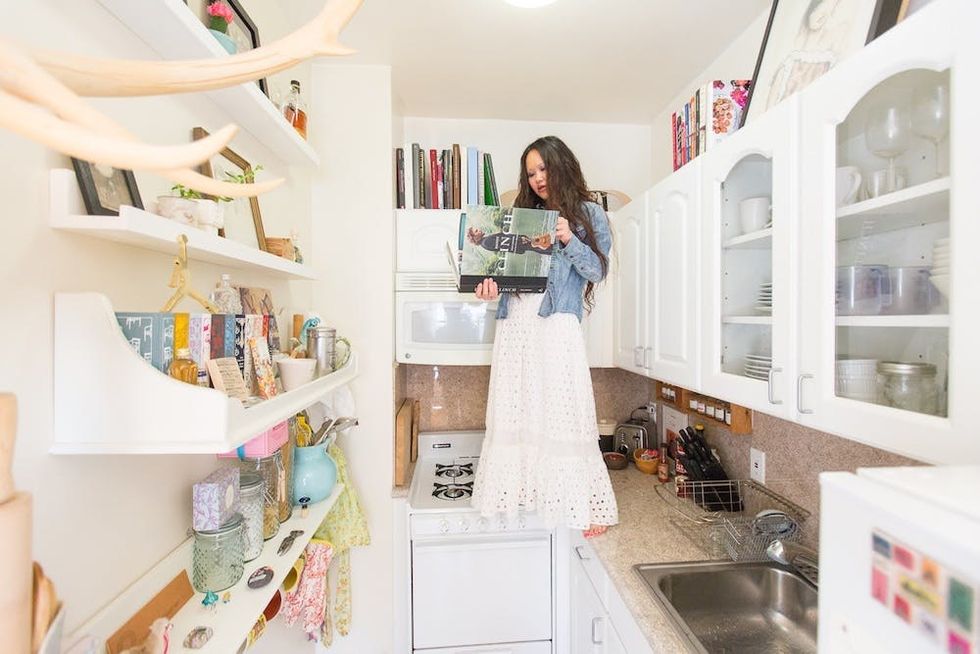
12. Live in an extra-small space? You may need to change the way you shop. “Tiny spaces require the most careful edits,” explains Melanie. “They require the strongest need to live an ‘edited’ life, meaning there is *no* room for excess. Your edit will likely require more than the ‘out with the old and in with the new’ mantra: That edit will have to be accompanied with a pared down way of life. Live with less! And keep it that way. In order to do this successfully, you need a plan or style for everything — how you dress, the way you eat and how you shop. It seems overwhelming at first, but to live without excess as a long-term plan actually has been proven to reduce stress! Some work at the beginning pays off big time in the long term!”
KITCHEN HACKS
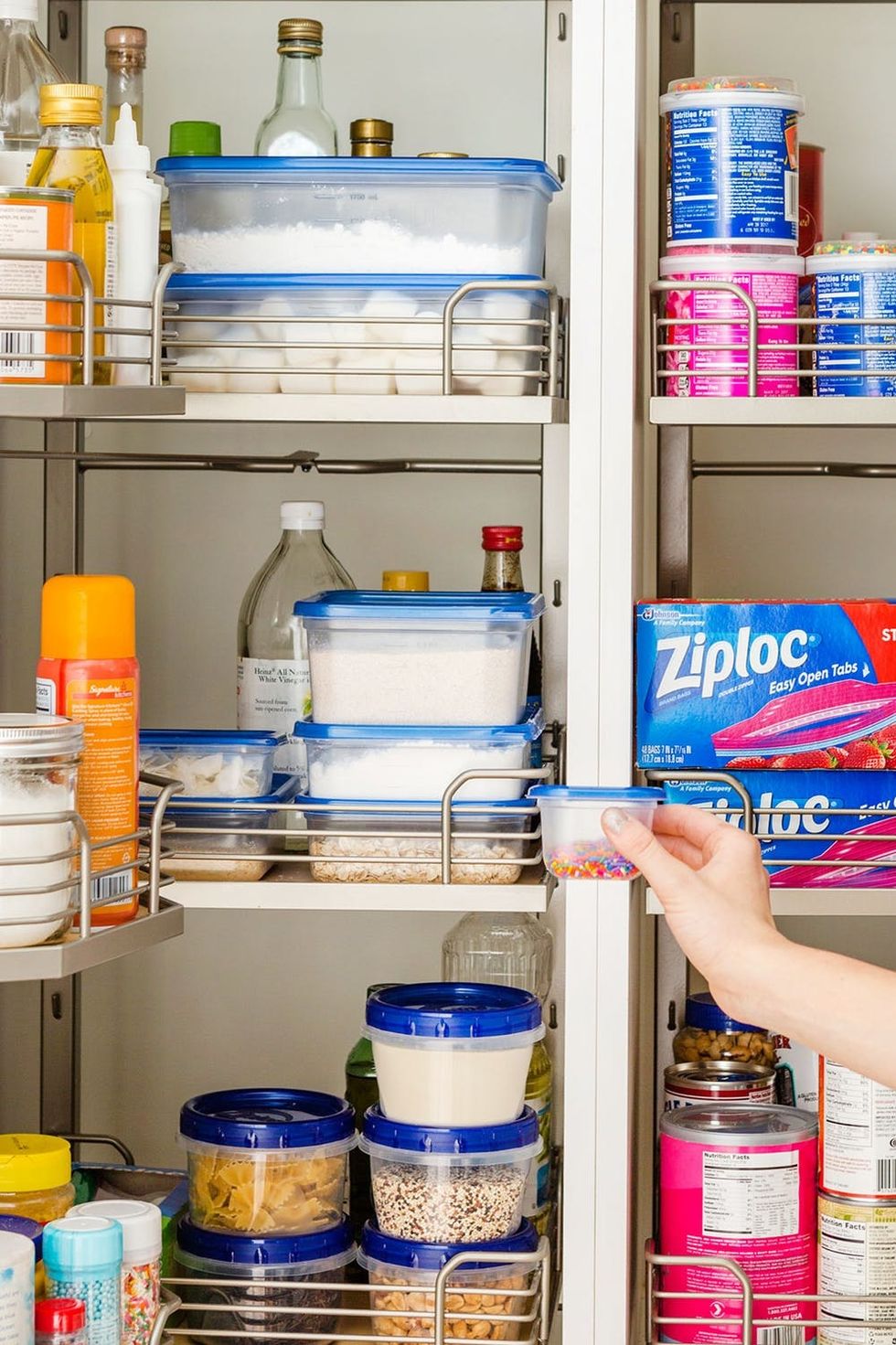
13. Streamline your pantry with uniform containers. “I keep my sugar, flours and dry goods in Ziploc® plastic containers,” explains Melanie. “I love using the same containers in every space I organize, as it helps me find what I’m looking for much easier! It’s a basic merchandising tip I stole from my professional life prior to starting my own business.”
14. Put the everyday-use stuff in the front. This one may be a no-brainer, but it’s worth reiterating. Stow your most-used foods and condiments in easy-to-reach places to avoid messing up your pantry.
15. Organize the rest by food type. Pantry shelves tend to be deep and short, which maximizes storage but makes it difficult to see the contents. If you organize your food by type (just like grocery stores do), you’ll know if you’re short on pasta — even if you don’t have a clear view of every product.
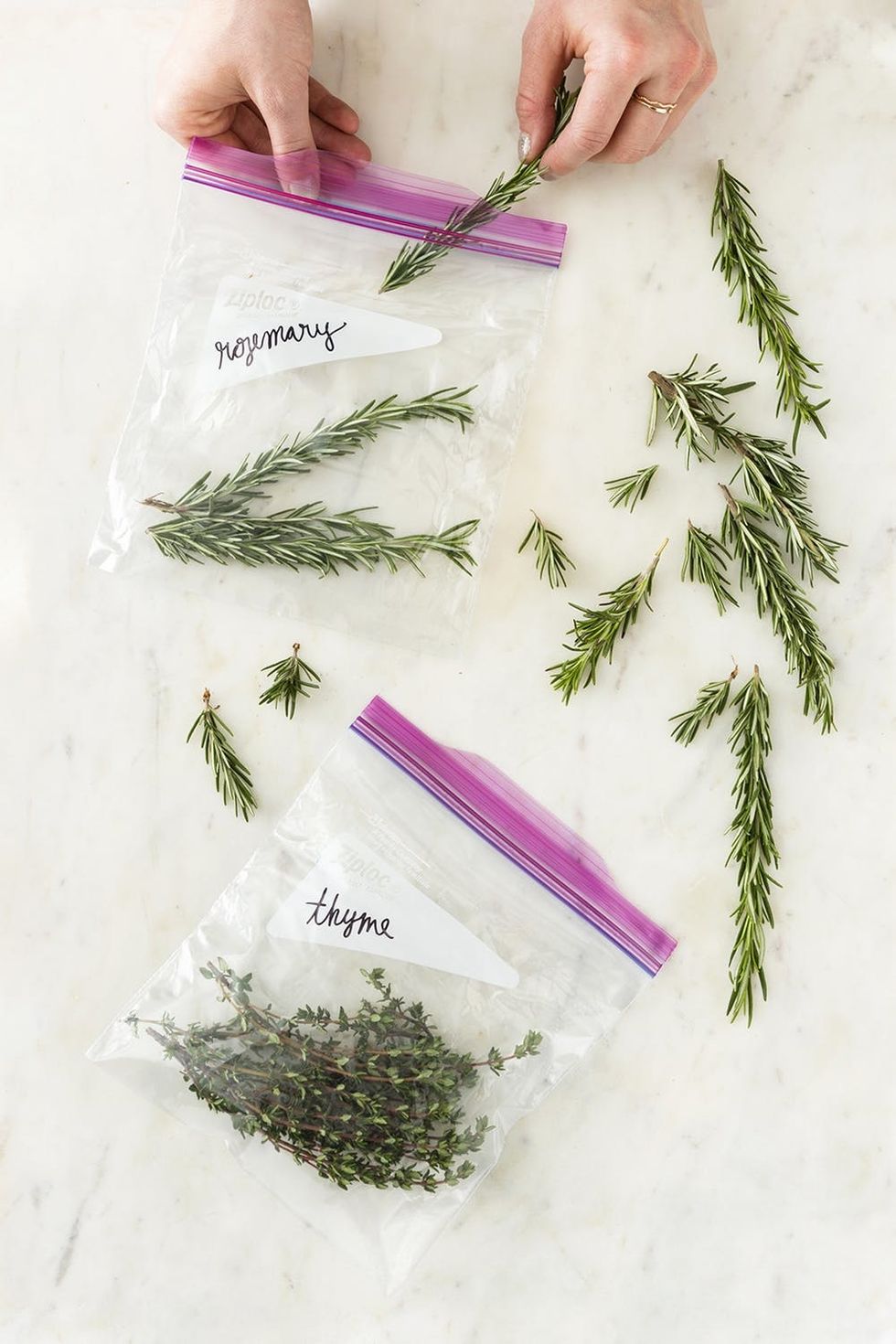
16. Instead of stocking up on dried spices, keep fresh herbs in plastic bags in the fridge. “I use Ziploc® bags to organize all my regularly used fresh spices and herbs from my herb garden,” says Melanie. Instead of stocking up on dried herbs and spices — and then promptly forgetting about them — use fresh herbs for cooking. Plus, pros say that dried herbs and spices should be replaced every six months! Yet another reason to go for the fresh stuff (bonus points if it’s homegrown).
17. Schedule a bi-monthly pantry clean-out. Every two months, go through your cabinets and toss what’s gone bad or stale. Make a donate pile for canned goods you’re probably not going to use. Chances are you’ll create a ton of new space!
18. Keep your pantry in mind when you hit the supermarket. Do you *really* have room for that jumbo bag of cereal, and are you *really* going to eat it all before it goes stale? Take advice from Melanie: “Once you edit what you have, then you make a list of what you need. Next, plan how to organize it, then shop! This order of operations will help you keep your pantry in tip-top shape.”
Have any awesome organization hacks to share? We wanna hear ‘em! Tweet us @BritandCo to share your tips.
















